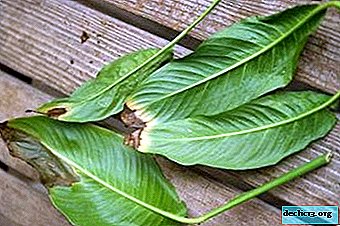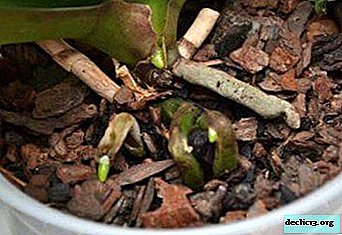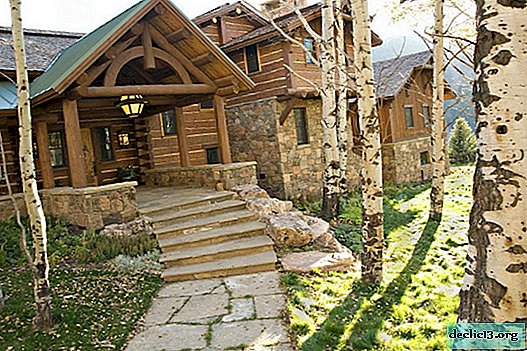The nuances of autumn care for roses. Preparing the plant for winter, protection from the cold

Rose is a perennial plant, but in order for it to successfully winter, a set of measures is necessary.
Pre-winter departure is simple, although it is carried out in several stages. But depending on the type of rose, care will be slightly different.
How to prepare a rose for winter colds, how to store a plant from the cold - we will tell further, and also give step-by-step instructions for caring for a rose bush in the open ground during winter.
Life cycle at this time of the year
In winter, the rose enters the dormant phase and is gaining new strength for future growth. On winter days, young shoots develop as much as possible, flowers bloom and fruits and seeds form.
Features of the content of rose bushes
The tasks of the gardener during this period:
- provide young shoots with potassium and phosphorus;
- carry out competent pruning;
- protect the rose from excessive moisture;
- gradually prepare the plant for frost.
What is the difference between varieties with different frost resistance?
All these activities are carried out for all types of roses with different frost resistance.
An exception would be a set of works to shelter plants from frost: frost-resistant roses can not be covered.
List of frost resistant varieties
 Canadian varieties are the most resistant to cold. However, in the grafted specimens the level of winter hardiness can change, therefore, only root-bearing ones are to be purchased among Canadian varieties. Among them are the following varieties:
Canadian varieties are the most resistant to cold. However, in the grafted specimens the level of winter hardiness can change, therefore, only root-bearing ones are to be purchased among Canadian varieties. Among them are the following varieties:
- William Shakespeare 2000;
- John Davis
- Quadra
- Queen Elizabeth;
- Felix Leclerc Rose;
- Black magic;
- Champlain.
European varieties with increased winter hardiness are much smaller. Roses of Cordes are popular. The bushes can withstand temperatures down to -30 degrees without additional shelter. Roses of Cordes are represented by such instances:
- Athena;
- Weiss Wolke;
- Westerland;
- Novalis;
- Rosa Der Hofnung;
- Robusta
- Souvenir of Baden-Baden.
We offer you to watch a useful video about frost-resistant varieties of roses:
Do I need to dig up?
Roses dig up if frosts are expected below minus 35 degrees. In this case:
- Bushes are cut to a height of 30-70 cm, depending on age. They remove all leaves, spray the plant with fungicide and carefully dig it out, brushing it off the ground.
- The bushes are placed in plastic containers and covered with loose soil mixed with rotted manure.
- Water the plants and move them to rooms with a constant temperature of +2 +4 degrees.
Step-by-step instructions on how to care for a bush that winter in the open
What needs to be done in the autumn?
The first step is to stop fertilizing with nitrogen fertilizers. Phosphoric potash fertilizers are used.Gradually reduce the frequency of watering and loosening. Pinching of shoots growing up is made, due to which, nutrients begin to be deposited in the tissues of the plant.
How to prepare for wintering?
 If you leave a few faded buds, the seeds will ripen at the rose, which will serve her as a signal of preparation for winter. Around the middle of October, leaves are gradually trimmed from bottom to top. This helps to get rid of various diseases, in addition, the rose will not be able to eat through the leaves and begins to prepare for winter.
If you leave a few faded buds, the seeds will ripen at the rose, which will serve her as a signal of preparation for winter. Around the middle of October, leaves are gradually trimmed from bottom to top. This helps to get rid of various diseases, in addition, the rose will not be able to eat through the leaves and begins to prepare for winter.
All rubbish is removed from under the bushes, weeds are weeded and fallen leaves are collected.. After this stage, a month before the shelter of the rose, the creeping of the shoots begins. Do this gradually to avoid deformation of the shoots. The last step in preparing the rose for winter is to cover the plant with the selected material.
Shelter
To cover the roots create an insulating layer on the soil. To do this, use earthing up with compost or dry earth. When hilling, do not rake the earth near the rose so as not to damage or expose its roots. Use only loose ground, a layer of earth must necessarily protect the vaccine. The earthing height is approximately 30-40 cm.
In regions with severe winters, complete shelter is needed, which is done after the onset of steady colds. An ideal shelter is lapnik or spruce sawdust, and the simplest solution is to shelter with synthetic material - burlap or agrotex. Do not forget about snow, it will most likely retain heat and protect it from frost.
For overgrown roses set frames or boxes, fitting them with any material:
- film;
- non-woven fabric;
- tarp etc.
We offer you to watch a useful video on how and with what to cover roses for the winter:
Watering
From the second half of September, watering is stopped to stop the development and formation of new shoots.Dry soil helps to tolerate cold and it develops less fungal and bacterial diseases.
Top dressing
In the fall, nutrients containing potassium and phosphorus are added. The rose improves metabolism, it tolerates cold better, protective properties increase.
 Phosphorus-potash fertilizers begin to be introduced in mid-August. 100 grams of superphosphate and 30 grams of potassium sulfate are diluted in 10 liters of water. This volume is enough for a well-developed bush or for several young bushes. After a week, potassium top dressing is applied, at the rate of 30 grams of potassium sulfate per 10 liters of water.
Phosphorus-potash fertilizers begin to be introduced in mid-August. 100 grams of superphosphate and 30 grams of potassium sulfate are diluted in 10 liters of water. This volume is enough for a well-developed bush or for several young bushes. After a week, potassium top dressing is applied, at the rate of 30 grams of potassium sulfate per 10 liters of water.
In September, they are fed with kalimagnesia, the rate of application of 15 grams per 10 liters of water. It can be replaced with any complex fertilizer intended for application in the fall season. If it is rainy weather, then the fertilizer is embedded in the soil, having previously distributed it along the basal zone.
For hilling, as an additional top dressing, compost with the addition of ash is perfect.
Pruning
Healthy spray roses do not prune in autumn, pruning is relevant only if pests are seen on the bush. Such shoots shorten by a third of the stem. The air temperature should be no higher than 4 degrees so that the trimmed plant does not start growing.
Too late cropped stems may not have time to heal, which will lead to their decay. First, all broken and dried branches are removed, that is, sanitary pruning is performed. Cut green shoots, as well as buds and flowers. Remove old branches with dark cracked bark.
All sections must have a small angle of inclination, they should be performed above the swollen kidney at a distance of about 1 cm. It is important that the kidney is directed outside the bush, so that the bush forms correctly in the future.The cut is smeared with garden var. For cutting, select a sharpened tool, which is ideally washed with a solution of potassium permanganate. The procedure is performed in calm, calm weather.
For different types of roses, pruning bears its subtleties.:
- Hybrid Tea and Repairing Roses fairly moderate pruning, in which shoots leave about 30 cm with 5 buds.
- Climbing roses with small flowers, only the tips of the stems are cut off; in large-flowered varieties, all faded shoots are removed, except for last year's pair.
- Polyanthe roses with large flowers, old shoots are removed, and the rest are shortened to 3-4 buds. Shoots with small flowers are kept with 2-3 buds, if the shoots are strong, weak, remove up to 1-2 buds.
We offer you to watch a useful video about the nuances of pruning roses for the winter:
Transfer
 Transplantation is carried out 2-3 weeks before frostsso that the bush has time to take root. The best months are September - October, when the earth is sufficiently moist.
Transplantation is carried out 2-3 weeks before frostsso that the bush has time to take root. The best months are September - October, when the earth is sufficiently moist.
- The bush is dug well, and the central root is cut to the maximum possible length.
- Sick and damaged roots are trimmed, carefully shake the ground and move to a new place. Autumn transplant is done to a greater depth of the original planting.
- The roots are evenly spread across the fossa, covered with earth and compact the seat.
- After watering, add dry earth to prevent freezing of the soil in winter. The root system of the plant should be larger than the aerial part.
Additional cold protection measures
An additional protection for all types of roses will be a plastic film that protects the shelter from rain.
If frames are used in the garden, roofing material is additionally laid on them, then covering material or lapnik, and fixed with a film on top.For a climbing rose, it is important to keep the shoots. In order to prevent contact between the lashes and the frozen ground as much as possible, a ruberoid protecting it from moisture is placed on it, and a spruce is placed on top of it.
Mistakes and the fight against their consequences
One of the main mistakes of winter care is the premature shelter of roses or, conversely, too late opening. As a result, the bushes dry up and turn black. It is advisable for Rosa to temper for a successful wintering, so she should not be covered during the first frosts. They cover the rose before the earth finally freezes.
Bad weather conditions and weakened bushes. For this reason, the whole season it is necessary to monitor the condition of plants, eliminating them from pests and diseases. Preventive soil treatment with copper sulfate or 3% Bordeaux mixture helps prevent the development of fungal diseases. Carry out this measure immediately before shelter.
In winter, it is necessary to take measures from rodents. Soaking a lump of sawdust with kerosene or using poison for mice near a bush will provide additional protection.
Observing these simple rules for caring for a rose in winter, you will save the queen of flowers until next year.

















